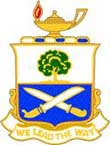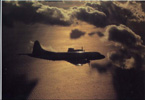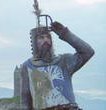dereck
Posts: 2800
Joined: 9/7/2004
From: Romulus, MI
Status: offline

|
quote:
ORIGINAL: worr
quote:
ORIGINAL: dereck
Unfortunately Worr, even by early-1942 the US WAS outproducing Japan.
Absolutely! Especialy in the case of the Navy.
But America was producing for a larger war than Japan was. Also Japan had a head start on the military effort as well as a tigher supply chain.
I think the 1942 "pinch" we all feel in the game is very realistic...though the KB dreadnought issue might be overdone.
Worr, out
Worr, those charts I included above showed America's production for the PACIFIC ALONE if you would read the charts.
The Japanese could produce a number of items but it would be at a cost of producing lesser of something else because they didn't have a broad industrial base. The US did ... we could increase production OVERALL simply because we had such a broad industrial base dating back to before the Great Depression. Included below is text from the source I've quoted above which explains the economics better than I can:
quote:
II. ECONOMIC PREPARATIONS
More than any other war in history, the Second World War was a war of material attrition. Ultimately the outcome of the war was decided as much, if not more, by the economic might of the United Nations as by any fighting skill they might have possessed. This situation was particularly evident in the Pacific War where a secondary industrial power challenged the mightiest industrial base in the world.
Japan, generally considered one of the industrialized nations of the world before 1941, was actually possessed of a rather feeble industrial base. Indeed, in terms of both per capita and total production, she only exceeded Italy among the “great” powers in ingot steel production, the basic measure of industrial viability. When compared with the other major powers the picture was even drearier:
Ingot Steel Production – 1937 (1,000s of tons)
................ Total ........ Tons Per Capita
U.S.A. ...... 51.0 ......... 0.40
Germany .. 19.8 ......... 0.18
U.S.S.R. ... 17.5 ......... 0.10
Britain ...... 13.0 ......... 0.28
France ...... 7.9 ........... 0.19
Japan ....... 5.8 ........... 0.07
Italy ......... 2.3 ........... 0.05
During the 1930’s, by a prodigious but ill-planned and poorly organized effort, certain industries vital to war purposes had been built up, though at a cost in efficiency which would not emerge until the pressures of war production proved too much for the thin reed which Japan’s industrial base actually was. Thus, while actual steel output increased some 14% between 1941 and 1943 (Japan’s peak steel production year) worker efficiency declined to but 59% of the prewar levels. The problem was, simply put, that the entire industrial base had not been broadened. Thus, while total aircraft was force-fed into a 1300% increase between 1931 and 1941 (from 368 airplanes to 5,088), between 1941 and 1944 with the immediate pressures of war upon them, the Japanese were only able to increase aircraft production by 443%, to 28,180 airplanes, for their peak production year.
During the same period the U.S. increased production of military aircraft by something like 3,238% from about 600 to 19,432 (and from 1941 to 1944 by about 500%, to some 96,318). Of course in 1931 military production was rather a small part of total aircraft production was rather a small part of total aircraft production but by 1944 it had become virtually all of total production. Meanwhile, in the U.S., aircraft industrial worker efficiency was actually increasing as advanced assembly line methods – adopted from automobile manufacturing – were introduced and utilized.
Japan’s basic problem, then, was that the pressure was not spread around, but merely applied to certain obviously necessary industries, such as electrical equipment, in which production scarcely increased by 30% between 1941 and the peak war year of 1944. Lack of this sort of equipment would hinder any increases in production of other types of vital materials.
By contrast the United States, which had more or less embarked on a consumer economy in the 1920’s, only to be interrupted by the Great Depression, found itself actually possessed of reserve production capacity resulting from the 1929 crash, and also from the experience of World War I, in which an enormous amount of waste had gone into our industrial expansion. In point of fact, the American standard of living continuously increased during World War II – an occurrence without precedent in history. It would be this reserve capacity, coupled with an enormous wealth of experience which would permit the United States to out produce Japan by enormous amounts in virtually every category of military equipment once it got its industrial capacity into full swing.
This, of course, was the key. As an examination of the accompanying warship production chart will demonstrate, it took the U.S. a little time to get fully into production, particularly in as much as it started its preparations for war rather later than any of the other powers. Thus, during all of 1942, the U.S. would add but one first line carrier (100 A/C) to its fleet, while Japan would add four (184 A/C). Of course, during the Second World War, the U.S. produced 108 aircraft carriers of all types, carrying 5,500 aircraft, as against Japanese production of 17, with spaces for 740 aircraft. Indeed, Japan’s total production of warships of all types barely approached 200, a figure exceeded by U.S. submarine production alone.
What it all boils down to is that economically Japan was a minor-league team, able to upset the pros occasionally, but in trouble over the long haul.
_____________________________
PO2 US Navy (1980-1986);
USS Midway CV-41 (1981-1984)
Whidbey Island, WA (1984-1986)
Naval Reserve (1986-1992)
|
 Printable Version
Printable Version


















 New Messages
New Messages No New Messages
No New Messages Hot Topic w/ New Messages
Hot Topic w/ New Messages Hot Topic w/o New Messages
Hot Topic w/o New Messages Locked w/ New Messages
Locked w/ New Messages Locked w/o New Messages
Locked w/o New Messages Post New Thread
Post New Thread